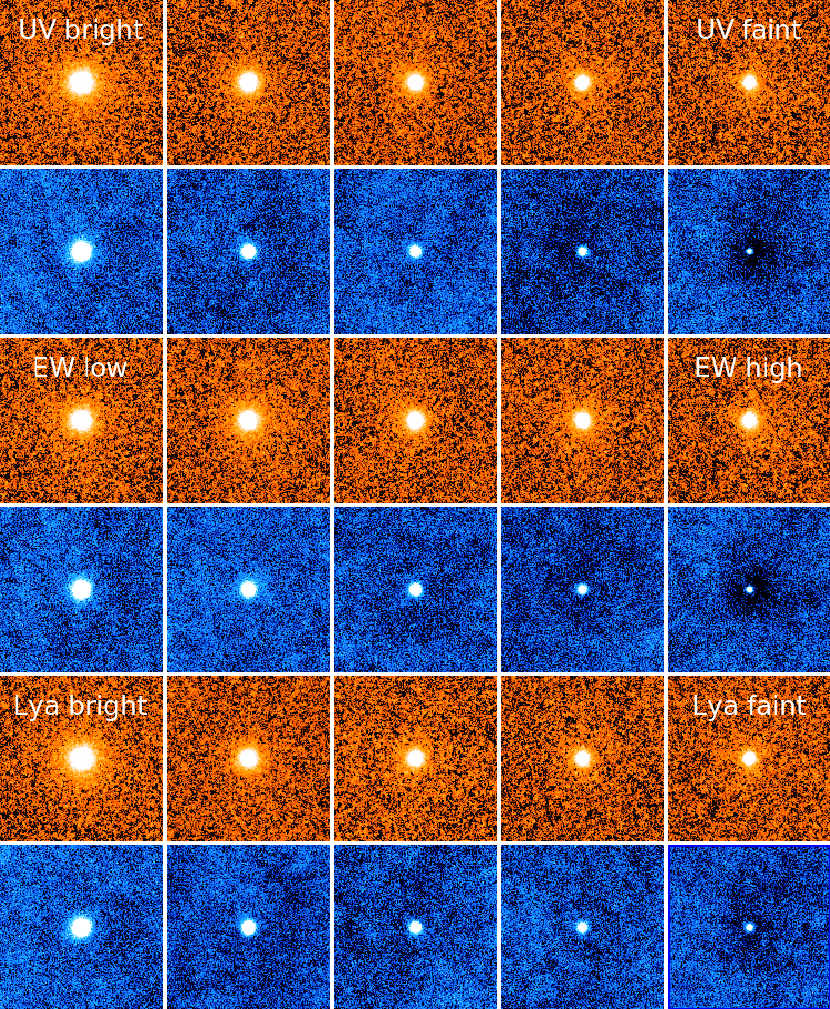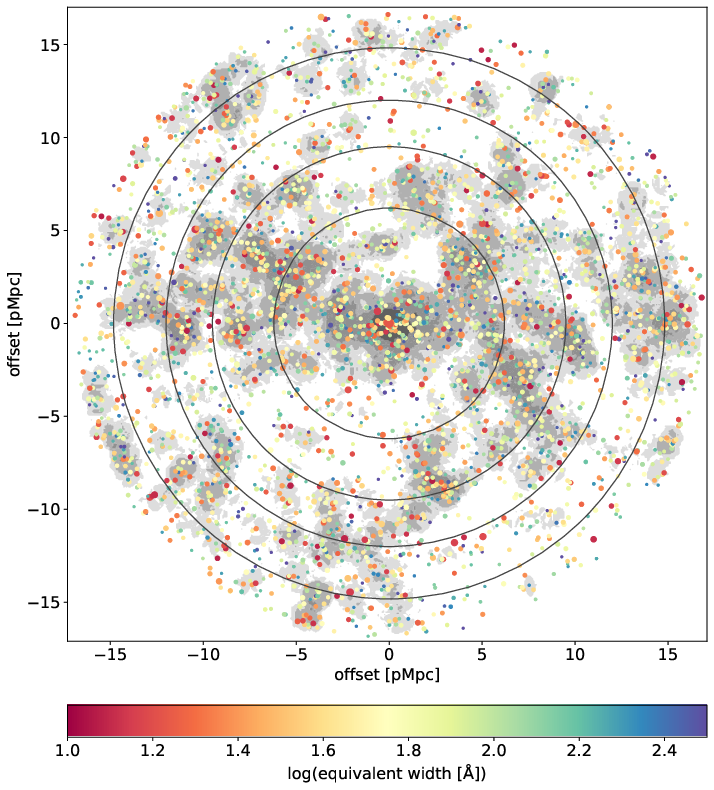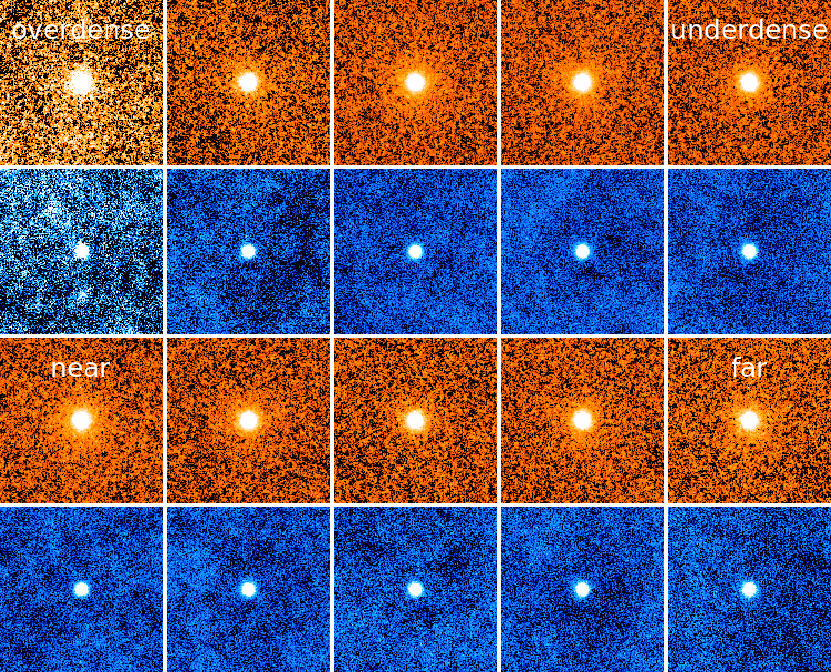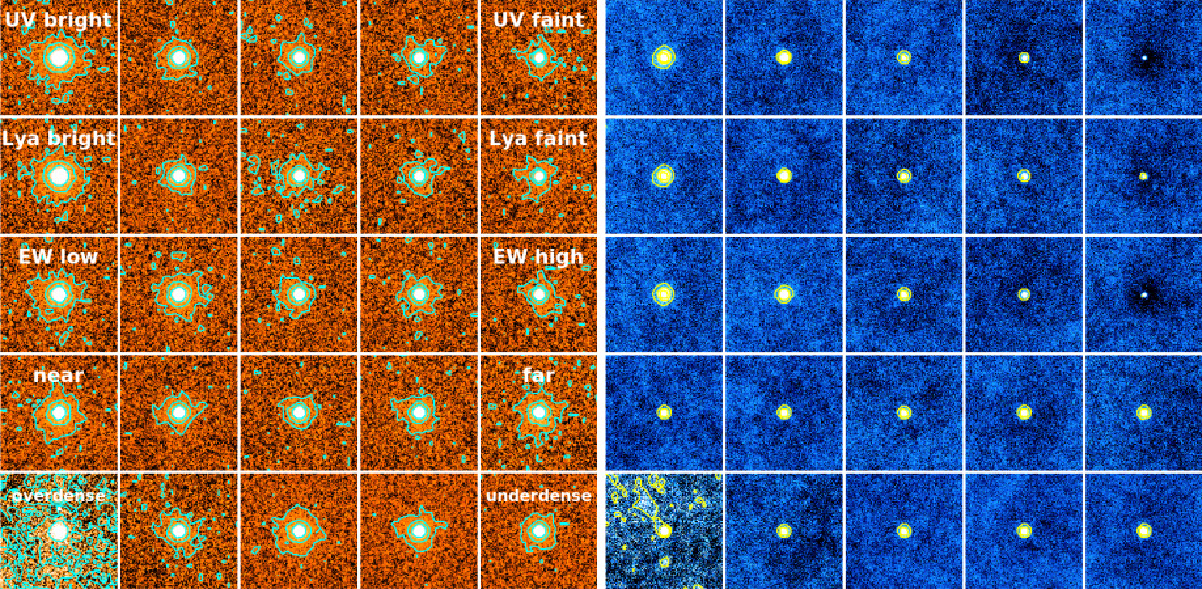研究成果・発表論文
UV and Lyα Halos of Lyα Emitters across Environments at z = 2.84
Kikuta, Satoshi, Matsuda, Yuichi, Inoue, Shigeki, Steidel, Charles C., Cen, Renyue, Zheng, Zheng, Yajima, Hidenobu, Momose, Rieko, Imanishi, Masatoshi, & Komiyama, Yutaka
要旨
We present UV and Lyα radial surface brightness (SB) profiles of Lyα emitters (LAEs) at z = 2.84 detected with the Hyper Suprime-Cam on the Subaru Telescope. The depth of our data, together with the wide-field coverage including a protocluster, enable us to study the dependence of Lyα halos (LAHs) on various galaxy properties, including Mpc scale environments. UV and Lyα images of 3490 LAEs are extracted, and stacking the images yields SB sensitivity of ~ 1 × 10-20 ergs-1 cm-2 rmarcsec-2 in Lyα, reaching the expected level of optically thick gas illuminated by the UV background at z ~ 3. Fitting of the two-component exponential function gives the scale-lengths of 1.56 0.01 and 10.4 0.3 pkpc. Dividing the sample according to their photometric properties, we find that, while the dependence of halo scale- length on environment outside of the protocluster core is not clear, LAEs in the central regions of protoclusters appear to have very large LAHs, which could be caused by combined effects of source overlapping and diffuse Lyα emission from cool intergalactic gas permeating the forming protocluster core irradiated by active members. For the first time, we identify UV halos around bright LAEs that are probably due to a few lower-mass satellite galaxies. Through comparison with recent numerical simulations, we conclude that, while scattered Lyα photons from the host galaxies are dominant, star formation in satellites evidently contributes to LAHs, and that fluorescent Lyα emission may be boosted within protocluster cores at cosmic noon and/or near bright QSOs. * This research is based on data collected at the Subaru Telescope, which is operated by the National Astronomical Observatory of Japan.








 Ja En
Ja En